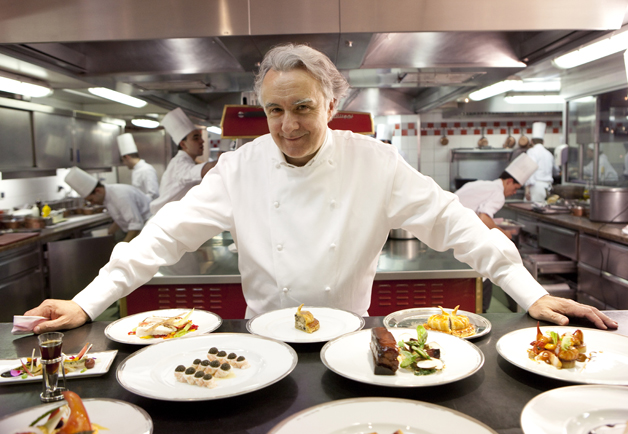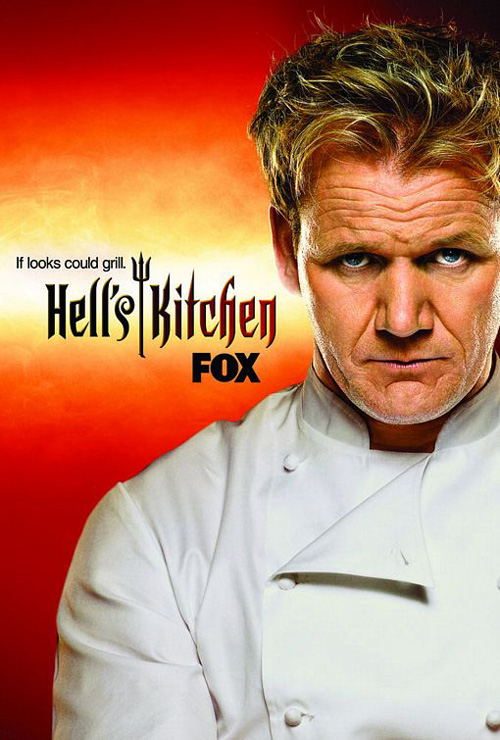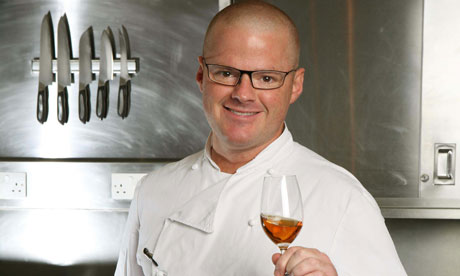WHAT IS MICHELIN STAR REPUTATION?
Dear Fellow Future Hoteliers,
Perhaps you have heard the term “Michelin Star Chef” and some questions might have occurred. What does a well known Tire Company have to do with Chef? With Culinary Industry? And how come every chef throughout the world thinks that Michelin Star is the highest award ever given to a successful Chef and Restaurateur? Well… This article will at least tell you how and why, and hopefully after you have read this, you will at least have some clue and understanding about the word MICHELIN STAR. Enjoy reading it!
MICHELIN STAR SYSTEMS
In 1933 André Michelin and his brother, Édouard Michelin, introduced the first countrywide French restaurant listings and introduced the Michelin star system for ranking food – later extended to the rest of the world. The guide awards one to three stars to a small number of restaurants of outstanding quality. One star indicates a “very good cuisine in its category”, a two-star ranking represents “excellent cuisine, worth a detour,” and a rare three stars are awarded to restaurants offering “exceptional cuisine, worth a special journey”. As of late 2009, there were 26 three-star restaurants in France and a total of 81 in the world.
The Michelin Guide (French: Guide Michelin [ɡid miʃ.lɛ̃]) is a series of annual guide books published by Michelin for over a dozen countries. The term normally refers to the Michelin Red Guide, the oldest and best-known European hotel and restaurant guide, which awards the Michelin stars. Michelin also publishes Green Guides for travel and tourism, as well as several newer publications such as the Guide Voyageur Pratique (independent travel), Guide Gourmand (good-value eating-places), Guide Escapade (quick breaks) and Guide Coup de Cœur (favourite hotels).
André Michelin published the first edition of the guide in 1900 to help drivers maintain their cars, to find decent lodging, and to eat well while touring France. It included addresses of filling stations, mechanics, and tire dealers, along with local prices for fuel, tires, and auto repairs. The guide was distributed free from 1900 until 1920. It began recognizing outstanding restaurants in 1926 with a star; two and three stars were added in the early 1930s. Gradually, additional guides were introduced to other European countries. By 2010, eight Red Guides were published for the countries of France, Germany, the Netherlands, Belgium/Luxembourg, Italy, Spain & Portugal, Switzerland, and Great Britain & Ireland.
Red Guides have historically listed many more restaurants than rivals, relying on an extensive system of symbols to describe each establishment in as little as two lines. Reviews of starred restaurants also include two to three culinary specialties. Recently, however, short summaries (2–3 lines) have been added to enhance descriptions of many establishments. These summaries are written in the language of the country for which the guide is published, but the symbols are the same throughout all editions.
Red Guides are also published for selected major cities: Paris, London, Tokyo, Kyoto/Osaka, Hokkaido, Hong Kong & Macau, New York City, the San Francisco Bay Area & Wine Country, Los Angeles, Chicago, and Las Vegas. There is also a Red Guide encompassing the “Main Cities of Europe”.
Michelin reviewers are known to be anonymous and independent; they do not identify themselves, and their meals and expenses are paid for by the company founded by the Michelin brothers, never by a restaurant being reviewed. The French chef Paul Bocuse, one of the pioneers of nouvelle cuisine in the 1960s, said, “Michelin is the only guide that counts. “In France, each year, at the time the guide is published, it has been said to spark a media frenzy similar to annual Academy Awards for movies. Media and people debate likely winners, speculation is rife, and TV and newspapers discuss which restaurant might lose, and who might gain, a Michelin star.
The MICHELIN Guide is much more than a listing or directory of restaurants. It is a professional rating of quality restaurants based on a unique, time-tested methodology that ensures a Michelin star stands for the highest quality. They employ full-time professional inspectors who anonymously visit restaurants and hotels, and evaluate them on a range of criteria.
Their evaluation process has been honed over time to identify consistently high-quality establishments to suit a range of budgets and across a range of styles and cuisines. All evaluations involve anonymous test meals or overnight stays at each establishment to assess the quality and the reliability of the experience. If their inspectors are impressed by a restaurant or hotel, they visit the establishment again and again. It is this sort of obsessive research that makes the Michelin Guide such a reliable source of recommendations. Today, the Michelin Guide collection comprises of 27 Red Guides that cover 23 countries and include 45,000 establishments.
MICHELIN STARS CRITERIA
The star symbols judge only what’s on the plate, meaning the quality of products, the mastering of flavors, mastering of cooking, personality of the cuisine, value for the money and the consistency of what the restaurant offers to its customers both throughout the menu and the year.
One star indicates a very good restaurant in its category, offering cuisine prepared to a consistently high standard. A good place to stop on your journey.
Two stars denote excellent cuisine, skillfully and carefully crafted dishes of outstanding quality. Worth a detour.
Three stars reward exceptional cuisine where diners eat extremely well, often superbly. Distinctive dishes are precisely executed, using superlative ingredients. Worth a special journey.
In addition to the awarding of stars, the Michelin Guide provides a written description of each locale and a variety of other symbols to give readers further insight into an establishment’s ambiance, type of cuisine and specialties, and wine list, among other factors. In addition, the guide provides a comfort rating represented by the use of one to five forks and spoons for restaurants and one to five pavilions for hotels. These symbols take into consideration the decor, service, cleanliness and upkeep of the surroundings (Michelin Travel, 2012).
THE MICHELIN STARS REPUTATION RESTAURANTS
There are so many Michelin Stars Restaurants throughout 23 countries all over the world, which vary from 1-Star to 3-Star Restaurant. However, in this research the author are only getting some samples from Chefs or Restaurateur who own not just one restaurant but a few restaurants who also gain the title of Michelin Stars Rank, while some Chefs or Restaurateurs are well known for his breakthrough in creating sophisticated food. Here are some from the list:
a. Alain Ducasse at The Dorchester (3 Michelin Star)
Alain Ducasse at The Dorchester offers contemporary French cuisine in a modern and elegant environment along with a professional, bespoke and friendly service orchestrated by Restaurant Director Nicolas Defremont and his energetic team. Executive Chef, Jocelyn Herland, interprets Alain Ducasse’s cuisine with a refined approach, consistently championing and enhancing current seasonal produce, much of which is sourced from British and French suppliers. A perfect place for a savvy lunch, the restaurant offers a 3-course set menu including wine, water and coffee. Private dining is also a must-try experience. Three Alain Ducasse restaurants now hold three Michelin stars: Le Louis XV – Alain Ducasse in Monaco, Alain Ducasse au Plaza Athénée in Paris and Alain Ducasse at The Dorchester in London.
b. Restaurant Gordon Ramsay (3 Michelin Stars)
In 1998 at the age of 31, Gordon set up his first wholly owned restaurant, Gordon Ramsay, in Chelsea. Combining an intimate ambience and exquisite cuisine by 2001 the restaurant had gained three Michelin stars which it retains today. Head Chef Clare Smyth, who was appointed to the position in January 2007 remains the only female chef in the UK to hold this accolade. This intimate restaurant seats 45 guests surrounded by the stylish interiors designed by the acclaimed designer David Collins. Combining contemporary elegance and unparalleled service, Restaurant Gordon Ramsay has the hallmark of true excellence.
c. The Fat Duck Restaurant (3 Michelin Stars)
The Fat Duck is a restaurant run by chef Heston Blumenthal in Bray, Berkshire, England. The restaurant is known for its menu of unusual dishes, created following the principles of molecular gastronomy (although Blumenthal dislikes the term) examples include: “snail porridge”, “sardine on toast sorbet”, “bacon and egg ice cream”, and “salmon poached with liquorice”.
At The Fat Duck, Blumenthal exploits psychology, experimenting with the diners’ perception. Among the starters in the restaurant’s tasting menu there used to be a “jelly of orange and beetroot”, a serving of two separate jellies, where the red has been made using blood oranges, and the orange from paprika beetroots.
The restaurant was opened in 1995 and is one of only four in the United Kingdom and Ireland that hold a three-star Michelin Guide rating; this has been the case since 2004. In 2005, it was named as the best restaurant in the world by Restaurant magazine[1] and Best Restaurant in the UK in 2008, 2009 and 2010, 2011, and 2012 scoring a maximum 10 out of 10 in the Good Food Guide.
• Third Best Restaurant in the World – San Pellegrino Worlds 50 Best Restaurant Awards 2010
• Second Best Restaurant in the World – San Pellegrino Worlds 50 Best Restaurant Awards 2009,2008,2007,2006
• Best Restaurant in the UK and 10/10 score – Good Food Guide 2008, 2009,2010,2011, 2012
• Conde Nast Traveller Innovation Award for “Chocolate Wine” – 2008
• Best Overall Service – Restaurant Magazine Front of House Awards 2007
• Best Restaurant in the UK – Good Food Guide 2007
• Grand Prix de L’Art de la Cuisine – International Academy of Gastronomy 2007
• Gault Millau, 19/20 rating -Gault Millau Guide January 2005
• 3 Michelin Stars – Michelin Travel Publications 2004
• Square Meal/BMW Best out of Town Restaurant – Square Meal Magazine, BMW Awards 2004
• Tatler Magazine Best Out of Town Restaurant – Tatler Magazine Awards 2004
• Catey Awards Chef of the Year – Catering & Hotelkeeper Magazine 2004
• Second Best restaurant in the World Award – Restaurant Magazine Worlds 50 Best Restaurant awards 2004
• Restaurant Magazine Best European Restaurant Award – Worlds 50 Best Restaurants Awards 2004
• Restaurant Magazine highest New Entry Award – Worlds Best 50 Restaurants Awards 2004
• Best Restaurant Award – Observer Food Monthly Awards 2004
• Good Food Guide accreditation 9/10 – 2004
• 2 Michelin Stars – Michelin Travel Publications 2001
• 5 AA rosettes – AA Publications 2001, 2002, 2003, 2004
• AA wine list of the year – AA Publications 2002
• AA Sherry List of the year – AA Sherry Publications 2002
• AA Restaurant of Year Award – AA Publications 2001
• Best of the year in Modern European category – Hotel and Restaurant Magazine, 2000
• 1 Michelin Star – Michelin Travel Publications 1998
SO WHAT IS MICHELIN STAR?
Michelin Stars was developed in 1933 and until now has became the Brand image of what a good restaurant should be. Every year Michelin has published Michelin Guide consisted of the best restaurant in 23 countries where every customer can choose where to dine in each and every place they went to. It has became the global trade mark that Restaurant holding the Michelin Star rank is definitely a restaurant they don’t want to miss and willing to experiences.
However, it is not easy for the Chefs or Restaurateurs to run Michelin Stars Restaurant, especially those who have more than one restaurant in different places and different countries. The Restaurant inspector from Michelin Star has been working endlessly to check their stability in maintaining or even if they want to upgrade their rank, for example from 1 star to two stars or from two stars to three Michelin Stars. Some of the restaurants unfortunately have been downgraded or even closed because they faced difficulties in maintaining the high standard of Michelin stars. While on the other hands, to have one restaurant holding the Michelin star rank has been a privilege, a prestige that every chefs and restaurateurs are hoping for, whether they want to achieve it and to maintain it, it is up to every individual regarding how they are able to set them up to achieve the high standard.





